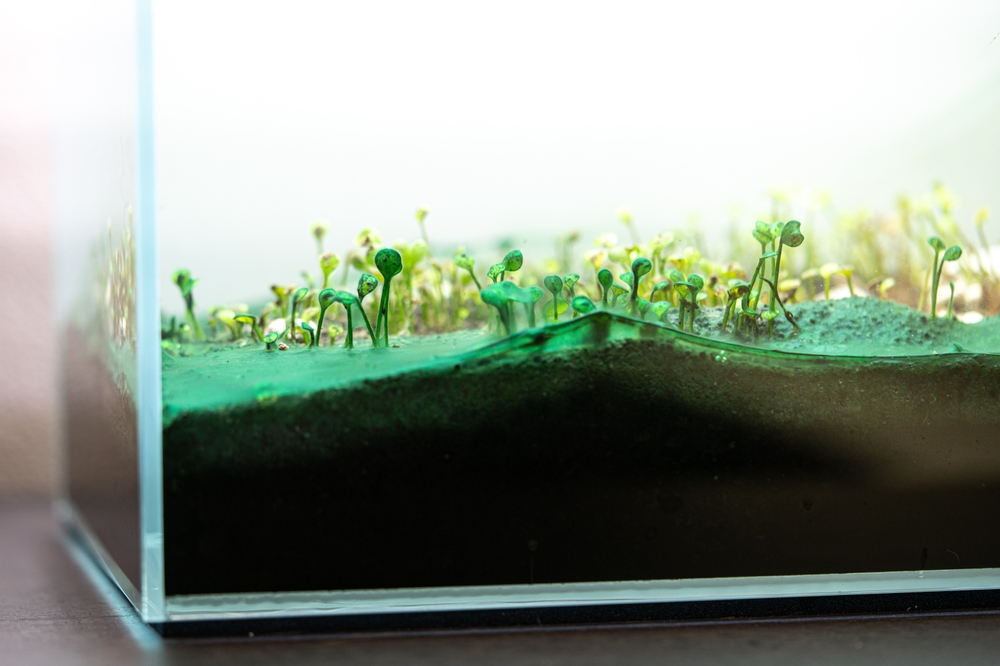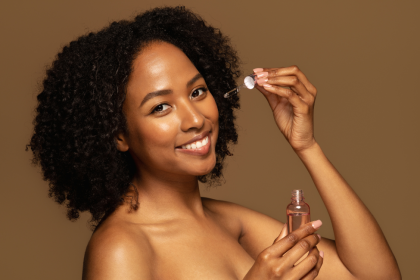Dermatologists who once dismissed algae as nothing more than the green gunk that clogs swimming pools are now prescribing skincare products packed with marine and freshwater algae extracts. What was considered a nuisance organism that belonged in biology textbooks has emerged as one of the most promising ingredients in clinical dermatology, with benefits that make traditional anti-aging ingredients look primitive.
The shift from synthetic compounds to algae-based treatments represents one of the most significant developments in dermatology since the introduction of retinoids. These ancient organisms, which have survived millions of years in harsh environments, contain compounds that can literally repair damaged skin at the cellular level while preventing future damage.
What makes this development particularly exciting for dermatologists is that algae extracts provide multiple benefits simultaneously—antioxidant protection, collagen stimulation, barrier repair, and anti-inflammatory effects—without the irritation and side effects associated with many traditional dermatological treatments.
Algae survived millions of years by becoming the ultimate skin protector
Algae organisms have evolved sophisticated defense mechanisms to survive in extreme environments including intense UV radiation, temperature fluctuations, and oxidative stress that would destroy human skin cells within minutes. These same protective compounds can be extracted and applied to human skin for similar protective effects.
The antioxidant capacity of certain algae species exceeds that of vitamin C and vitamin E by orders of magnitude, providing protection against free radical damage that causes aging, hyperpigmentation, and skin cancer. These marine antioxidants work differently than terrestrial plant antioxidants, offering broader spectrum protection.
Mycosporine-like amino acids found in marine algae provide natural UV protection that can complement or even enhance the effectiveness of traditional sunscreens. These compounds absorb UV radiation across a broader spectrum than most chemical sunscreen ingredients while being completely biocompatible with human skin.
The polysaccharides in algae create protective films on skin surfaces that help maintain hydration while allowing the skin to breathe naturally. This moisture-retention mechanism is more sophisticated than traditional moisturizers because it adapts to environmental conditions and skin needs.
Algae produce compounds called phycobilins that have powerful anti-inflammatory properties specifically targeting the inflammatory pathways involved in acne, rosacea, and other inflammatory skin conditions. These natural anti-inflammatories often work better than synthetic alternatives without causing side effects.
The cellular repair mechanisms are genuinely impressive
Marine algae contain peptides and growth factors that stimulate collagen production and cellular regeneration at rates that rival prescription treatments. These bioactive compounds work by activating the same cellular pathways that retinoids target but through gentler, more natural mechanisms.
Fucoidan, a complex polysaccharide found in brown algae, has been shown to accelerate wound healing and tissue repair by enhancing cellular communication and promoting healthy cell division. This compound essentially tells skin cells to behave younger and repair damage more efficiently.
The mineral content of marine algae, including zinc, selenium, and magnesium, provides essential cofactors for enzymatic processes involved in skin repair and maintenance. These minerals are delivered in bioavailable forms that skin cells can readily absorb and utilize.
Omega-3 fatty acids from algae support skin barrier function and reduce inflammation more effectively than plant-based omega-3s because they’re in the same molecular forms that human skin naturally produces. This molecular compatibility makes algae-derived fatty acids superior for topical application.
Algae extracts can stimulate the production of natural moisturizing factors and ceramides that are essential for healthy skin barrier function. This goes beyond simply adding moisture to actually improving the skin’s ability to maintain its own hydration levels.
Clinical results are making skeptics into believers
Dermatologists who were initially skeptical about algae extracts are being convinced by clinical studies showing measurable improvements in skin texture, tone, and overall health parameters. These aren’t just cosmetic improvements—they’re quantifiable changes in skin function and structure.
Patients using algae-based treatments often report improvements in skin sensitivity and tolerance to other skincare ingredients, suggesting that algae extracts help restore normal skin barrier function. This barrier repair makes other treatments more effective while reducing irritation.
Acne treatment protocols incorporating algae extracts are showing success rates comparable to traditional antibiotic treatments without the risks of antibiotic resistance or microbiome disruption. The antimicrobial compounds in certain algae species target acne bacteria while supporting beneficial skin microorganisms.
Anti-aging treatments using algae extracts are producing visible improvements in fine lines, elasticity, and skin firmness that rival results from more invasive procedures. The collagen-stimulating effects of algae compounds provide structural improvements rather than just surface-level changes.
Rosacea and sensitive skin patients are experiencing significant symptom reduction with algae-based treatments, often after failing to respond to traditional anti-inflammatory medications. The gentle yet effective nature of algae extracts makes them suitable for even the most reactive skin types.
The sustainability factor is changing everything
The environmental advantages of algae-based skincare align with the growing demand for sustainable beauty products while providing superior performance compared to many synthetic alternatives. Algae can be cultivated using minimal resources while actually improving environmental conditions.
Algae cultivation requires no arable land, minimal water, and no pesticides or fertilizers, making it one of the most environmentally friendly sources of cosmetic ingredients. Many algae species actually help clean water and air during their growth, creating net environmental benefits.
The biodegradability of algae extracts means that skincare products using these ingredients don’t accumulate in water systems or create environmental pollution the way some synthetic cosmetic ingredients do. This environmental compatibility is becoming increasingly important to both consumers and regulators.
Sustainable harvesting practices for wild algae and controlled cultivation systems ensure consistent quality and potency while protecting marine ecosystems. This sustainable approach provides reliable ingredient sources without depleting natural resources.
The carbon footprint of algae cultivation is often negative, meaning that growing algae for cosmetic use actually removes more carbon dioxide from the atmosphere than it produces. This makes algae-based skincare products carbon-negative beauty solutions.
Different algae species target specific skin concerns
Red algae extracts are particularly effective for anti-aging applications because they contain high concentrations of peptides and minerals that stimulate cellular renewal and collagen production. These compounds work synergistically to provide comprehensive age-prevention benefits.
Brown algae species like kelp and wakame contain fucoidans and alginates that excel at skin barrier repair and hydration. These compounds are particularly beneficial for dry, damaged, or compromised skin that needs intensive repair and protection.
Blue-green algae, including spirulina and chlorella, provide powerful detoxification benefits that help clear congested pores and reduce inflammation. These freshwater algae are particularly effective for acne-prone and combination skin types.
Microalgae species can be cultivated to produce specific compounds in concentrated forms, allowing for targeted treatments that address particular skin concerns with precision. This biotechnology approach enables customized algae extracts for specific dermatological applications.
The combination of different algae species in treatment formulations creates synergistic effects where the benefits of multiple species work together to provide comprehensive skin improvement. These multi-algae formulations often outperform single-ingredient treatments.
The science is finally catching up to the potential
Advanced extraction techniques are now able to isolate and concentrate the most beneficial compounds from algae while removing potentially irritating components. This technological advancement has made algae extracts more effective and suitable for sensitive skin applications.
Bioavailability studies show that algae-derived compounds are readily absorbed by human skin and can reach the cellular levels where they provide their beneficial effects. This bioavailability is often superior to synthetic compounds that may not penetrate skin barriers effectively.
Stability improvements in algae extract formulations have solved the preservation challenges that previously limited the shelf life and effectiveness of algae-based products. Modern algae skincare products maintain their potency throughout their intended use period.
Clinical research is revealing the specific mechanisms by which algae compounds improve skin health, providing the scientific foundation that dermatologists need to confidently recommend these treatments to patients. This research validates traditional uses while revealing new applications.
Standardization of algae extracts ensures consistent potency and quality across different products and manufacturers, giving dermatologists confidence in the reliability of algae-based treatments. This standardization is essential for clinical use and patient safety.
The future of algae in dermatology includes personalized treatments based on individual skin microbiome analysis, genetic factors, and specific skin concerns. This precision approach will maximize the benefits of algae extracts while minimizing any potential adverse reactions.
Algae represents a paradigm shift in dermatology from synthetic, one-size-fits-all treatments toward natural, multifunctional compounds that work with skin biology rather than against it. This approach aligns with the growing understanding that effective skincare should support rather than disrupt natural skin processes.
The embrace of algae extracts by dermatologists reflects a broader shift toward evidence-based natural medicine that combines traditional wisdom with modern scientific understanding to create more effective and safer treatments for skin health.
















